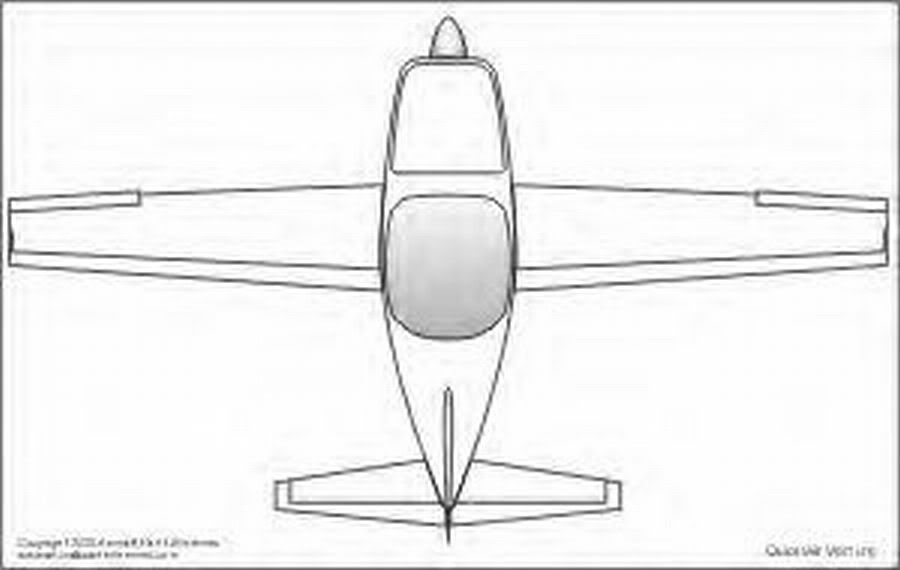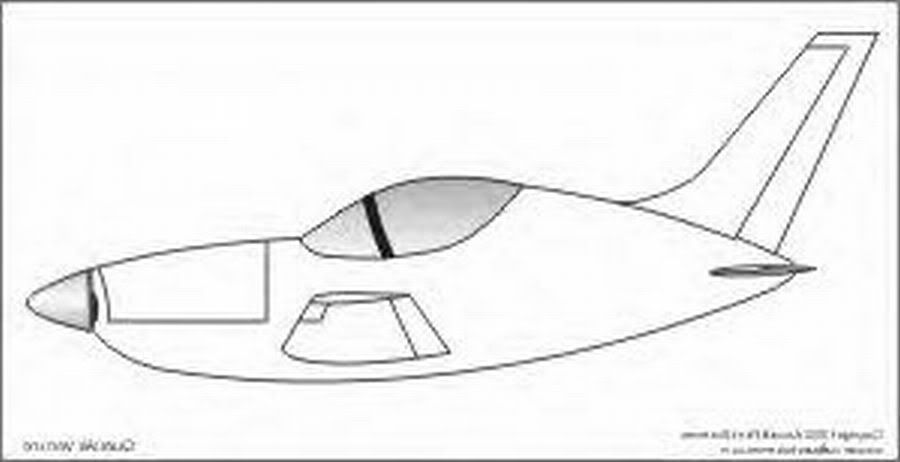 02-24-2010, 04:02 PM
02-24-2010, 04:02 PM
|
#71 (permalink)
|
|
Master EcoModder
Join Date: Dec 2007
Location: Upstate SC
Posts: 1,088
Thanks: 16
Thanked 677 Times in 302 Posts
|
I have my back up lights shining through a clear panel on the underside of my boattail. They are 2 tractor work lights, so they are bright. On my boattail, I only have the license plate, license plate lights, and turn signal lights mounted at the tip of the boattail. The tail lights are mounted under a clear panel at the back of the upper surface of the boattail and the back up lights are mounted at the back of the lower surface of the boattail. This is how I solved my problem of having not enough surface area at the tip of the boattail to mount all of the rear lighting functions. Also have a line of marker lights and a turn signal light running up along each side of the boattail to get full width illumination from the rear. All of the lights in the boat tail except for the back up lights are LED.
|
|
|

|
 Today Today
|
|
|
|
 Other popular topics in this forum...
Other popular topics in this forum...
|
|
|
|
 02-24-2010, 04:44 PM
02-24-2010, 04:44 PM
|
#72 (permalink)
|
|
Master EcoModder
Join Date: Oct 2008
Location: Mid-Atlantic
Posts: 491
Thanks: 170
Thanked 69 Times in 44 Posts
|
Basjoos,
Thanks for those words on lights and license plate placement. That is helpful to anyone contemplating any form of boattail.
I have a question. I've been watching the various efforts in this thread to scientifically calculate, at least from one ref source, the appropriate angle of the top of a boattail. The angles that are being discussed seem much smaller than the aerocivic. I think I recall reading somewhere else that you said you modeled the boattail from the profile of a small sports aircraft. Certainly, I would be the last to argue with the success you have achieved. The configuration which you have designed is certainly easier to live with than some others that I have seen. My question is this - have you done any testing of the boattail using yarn tufts? I saw that Metro had done some such testing and had some "apparent" problems along the sides, blamed on mirrors, and along the bottom.
We all are in your debt for showing the way so keep up the good work!
|
|
|

|
 02-24-2010, 08:33 PM
02-24-2010, 08:33 PM
|
#73 (permalink)
|
|
Master EcoModder
Join Date: Dec 2007
Location: Upstate SC
Posts: 1,088
Thanks: 16
Thanked 677 Times in 302 Posts
|
I patterned my boattail after the tail cone of the Questair Venture, which is a 350mph kitplane nicknamed "the flying egg". I tufted the entire area of my rear window and it had attached airflow throughout. I can't see the rest of my boattail and I don't know of any fellow aero nuts living around here who could follow my car and make sense of what they were seeing, so I haven't been able to test the rest of the boattail's surfaces. But I've noticed that parts of cars that have recirculating airflow buffeting them usually get covered with crud, and my boattail stays clean except for a very small amount of crud deposited on the underside of the boattail.
|
|
|

|
 02-24-2010, 10:44 PM
02-24-2010, 10:44 PM
|
#74 (permalink)
|
|
Master EcoModder
Join Date: Dec 2008
Location: Southern WI
Posts: 829
Thanks: 101
Thanked 563 Times in 191 Posts
|
Quote:
Originally Posted by basjoos

I have my back up lights shining through a clear panel on the underside of my boattail. They are 2 tractor work lights, so they are bright. On my boattail, I only have the license plate, license plate lights, and turn signal lights mounted at the tip of the boattail. The tail lights are mounted under a clear panel at the back of the upper surface of the boattail and the back up lights are mounted at the back of the lower surface of the boattail. This is how I solved my problem of having not enough surface area at the tip of the boattail to mount all of the rear lighting functions. Also have a line of marker lights and a turn signal light running up along each side of the boattail to get full width illumination from the rear. All of the lights in the boat tail except for the back up lights are LED.
|
Hi Bajoos,
Nice to hear from you.
Now to some questions... 
You might recognize this picture. It was taken by yours truly at HybridFest in Madison last summer.
Can you elaborate on each of the lights highlighted in this picture?
And what is that object, located at (6)??
Also, are your backup lights actually mounted underneath the extension, and facing the ground?
Where did you source the lights from?
Thanks, Jim.

|
|
|

|
 02-25-2010, 06:31 AM
02-25-2010, 06:31 AM
|
#75 (permalink)
|
|
Master EcoModder
Join Date: Oct 2008
Location: Mid-Atlantic
Posts: 491
Thanks: 170
Thanked 69 Times in 44 Posts
|
Thanks Basjoos. Looks like you increased top angle as you got farther back. The final angle looks to be approximately 25%. That is valuable information in that your boattail can be short enough to be practical for street use!
Theory is nice, and I think we all want to adhere as much as possible, but you gotta be able to drive the thing ;-)
|
|
|

|
 02-25-2010, 09:19 AM
02-25-2010, 09:19 AM
|
#76 (permalink)
|
|
Master EcoModder
Join Date: Dec 2007
Location: Upstate SC
Posts: 1,088
Thanks: 16
Thanked 677 Times in 302 Posts
|
1) six tail lights (trailer tail lights)
2) turn signals (trailer marker lights)
3) more tail lights (trailer marker lights)
4) marker lights (2 on each side to show full width of car)
5) turn signals (trailer marker lights)
6) license plate illumination lights
All were bought in the automotive department at Walmart. The trailer tail lights were incandescent, but I brought aftermarket LED bulbs to replace the stock incandescents. When I rebuilt the boattail after getting rear ended, I wanted to build a unique, bright, rear lighting pattern that couldn't be missed by future Speedracer wannabe's coming up fast from behind.
The backup lights are mounted under the tip of the boattail under clear lexan in the same manner that the 6 tail lights are mounted above the tip of the boattail under clear lexan. The backup lights are aimed slightly down from horizontal.
Here are line drawings of the Questair Venture that I patterned my boattail from. Ideally I should have used a less steep angle on the underside to compensate for the road surface restricting the fill-in airflow under the boattail, but I have a steep approach angle to my driveway and didn't want the boattail to drag so I went with the Venture tailcone angle (aircraft require tail clearance for when they rotate on takeoff). To compensate, I made my rear wheel boattails asymmetric to help direct airflow under the boattail. Based on the dirt deposit patterns under the boattail, the whole setup seems to work, but it would be nice to confirm it with tufting.


Last edited by basjoos; 02-25-2010 at 09:25 AM..
|
|
|

|
 02-25-2010, 10:01 AM
02-25-2010, 10:01 AM
|
#77 (permalink)
|
|
Batman Junior
Join Date: Nov 2007
Location: 1000 Islands, Ontario, Canada
Posts: 22,541
Thanks: 4,085
Thanked 6,989 Times in 3,619 Posts
|
Quote:
Originally Posted by jimepting

I saw that Metro had done some such testing and had some "apparent" problems along the sides, blamed on mirrors, and along the bottom.
|
Define "problems"  For the purposes of my experimenting, I considered separation to be a problem.
FYI, I don't think my tuft testing revealed any separated flow on the boat tail -- except where I expected to see it, such as on the bottom aft of the rear control arms (which extend into free flow), and aft of the un-faired tires.
There were definitely areas of increased turbulence. EG. the driver's side of the car showed more, compared to the passenger side (which I attributed to the driver's side only mirror). |
|
|

|
 02-25-2010, 10:05 AM
02-25-2010, 10:05 AM
|
#78 (permalink)
|
|
Master EcoModder
Join Date: Oct 2008
Location: Mid-Atlantic
Posts: 491
Thanks: 170
Thanked 69 Times in 44 Posts
|
Quote:
Originally Posted by basjoos

Here are line drawings of the Questair Venture that I patterned my boattail from. Ideally I should have used a less steep angle on the underside to compensate for the road surface restricting the fill-in airflow under the boattail, but I have a steep approach angle to my driveway and didn't want the boattail to drag so I went with the Venture tailcone angle (aircraft require tail clearance for when they rotate on takeoff). To compensate, I made my rear wheel boattails asymmetric to help direct airflow under the boattail. Based on the dirt deposit patterns under the boattail, the whole setup seems to work, but it would be nice to confirm it with tufting.
|
This is where the practical intrudes quickly on the theoretical  If it were not your driveway, then it would have been something you would have encountered along the way - a bad gas station transition, a severely crowned intersection, etc. I think that folks ignore the practical road conditions at their own peril! It would be a shame to spend lots of money and effort on a great performing boattail, only to destroy it on some hard object along the way. Well done! 
It may be worth considering the "breakaway" characteristics of any boattail. For example, if the strongest main attachment support might somehow be located at or near the top of the boattail and if the lower attachments were relatively weaker, then any dragging of the boattail might just break the lower attachments and cause fairly minor damage. Dragging damage would also be minimized by incorporating some sort of rugged skid plate in the rear bottom of the boattail.
Another thought. One could build the boattail in two sections. The rear section could be simple, light and sacrificial. Black plastic glued to strofoam comes to mind. Just thinking out loud.
Last edited by jime57; 02-25-2010 at 10:36 AM..
|
|
|

|
 02-25-2010, 10:46 AM
02-25-2010, 10:46 AM
|
#79 (permalink)
|
|
Master EcoModder
Join Date: Oct 2008
Location: Mid-Atlantic
Posts: 491
Thanks: 170
Thanked 69 Times in 44 Posts
|
Quote:
Originally Posted by MetroMPG

Define "problems"  For the purposes of my experimenting, I considered separation to be a problem. |
Poor choice of words  Your definition is clearly the right one.
I am however very interested in reducing the underside turbulence, vice separation, to an absolute minimum. So I guess I would consider turbulence to be a bit of a problem since it lowers boattail effectiveness. Am I wrong? |
|
|

|
 02-25-2010, 10:57 AM
02-25-2010, 10:57 AM
|
#80 (permalink)
|
|
Batman Junior
Join Date: Nov 2007
Location: 1000 Islands, Ontario, Canada
Posts: 22,541
Thanks: 4,085
Thanked 6,989 Times in 3,619 Posts
|
You're not wrong. The less turbulence the better, of course.
But any turbulence you'll see on the boat tail's surfaces probably isn't going to be caused by the boat tail itself; it'll be coming from upstream sources.
Nothing wrong with going over the upstream bits with a fine tooth comb.
|
|
|

|
|